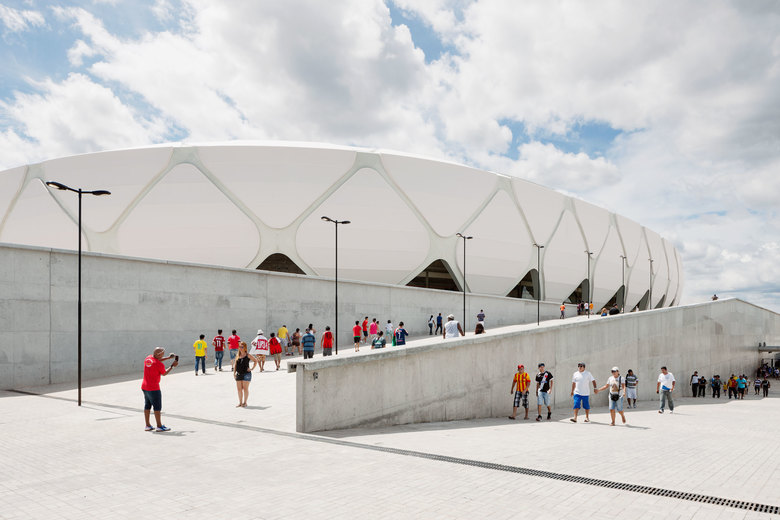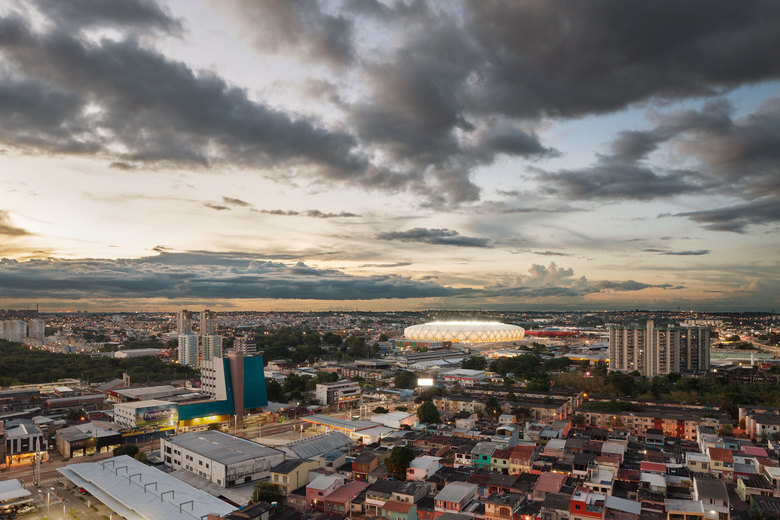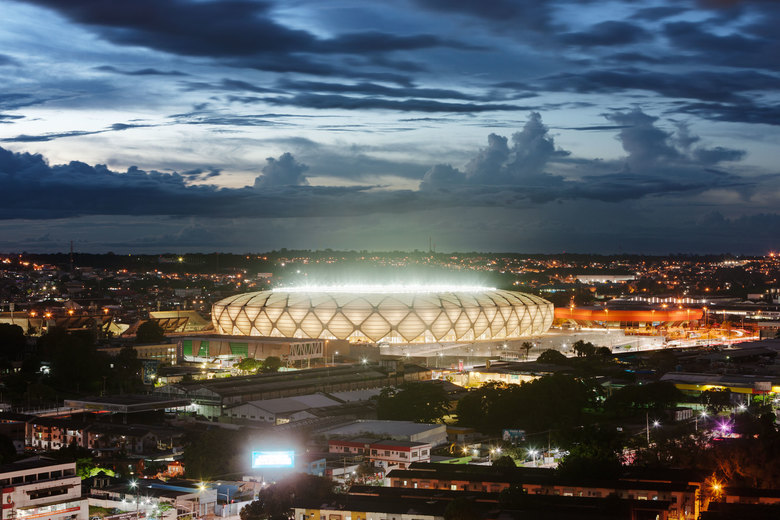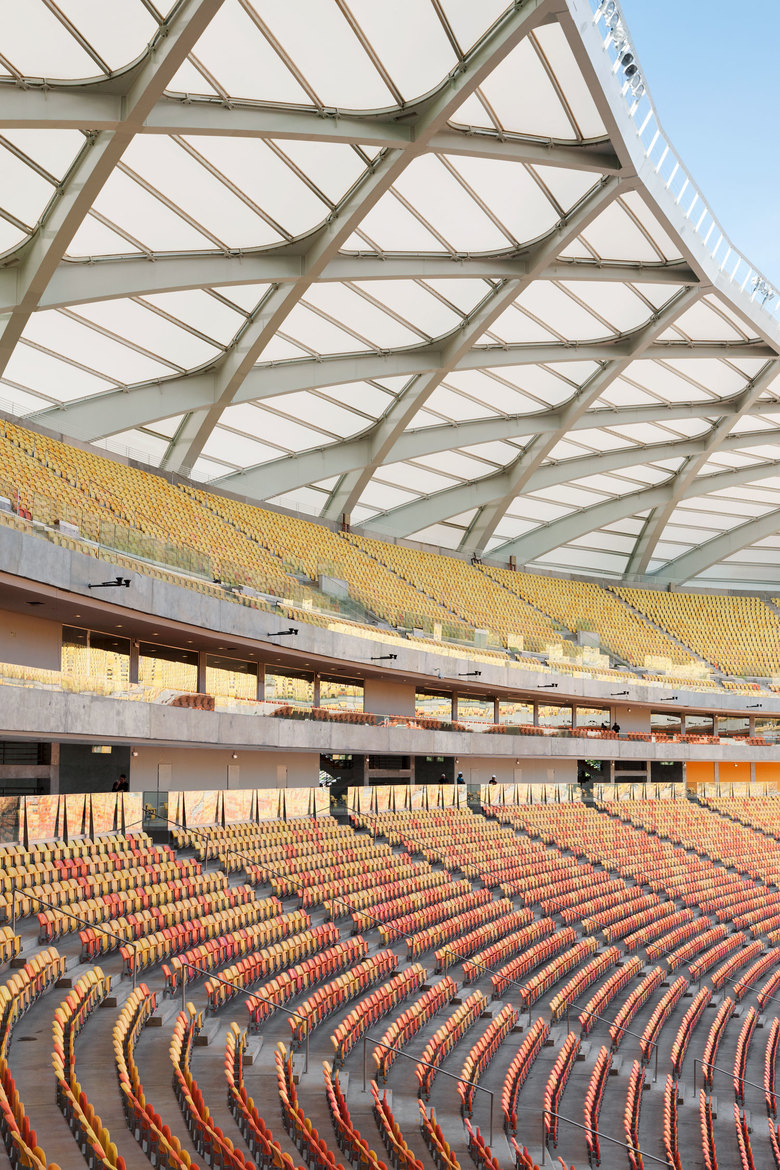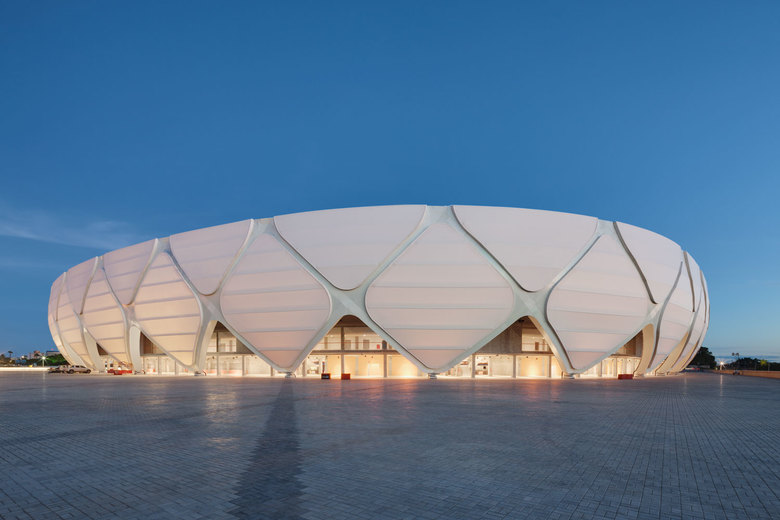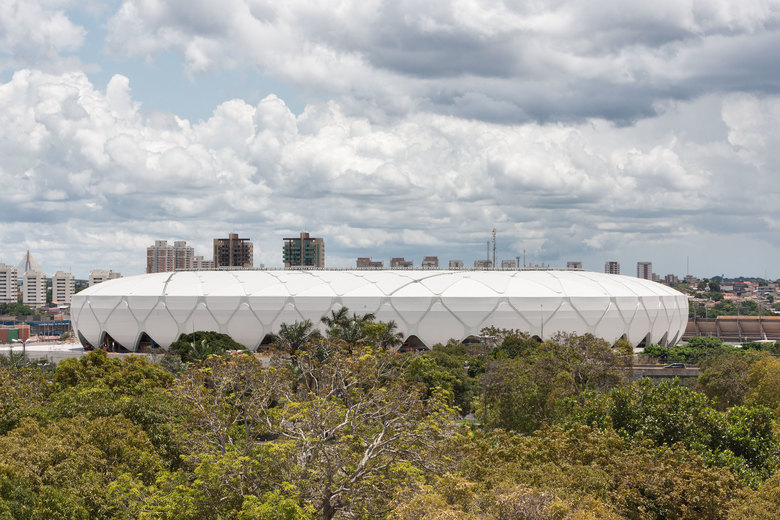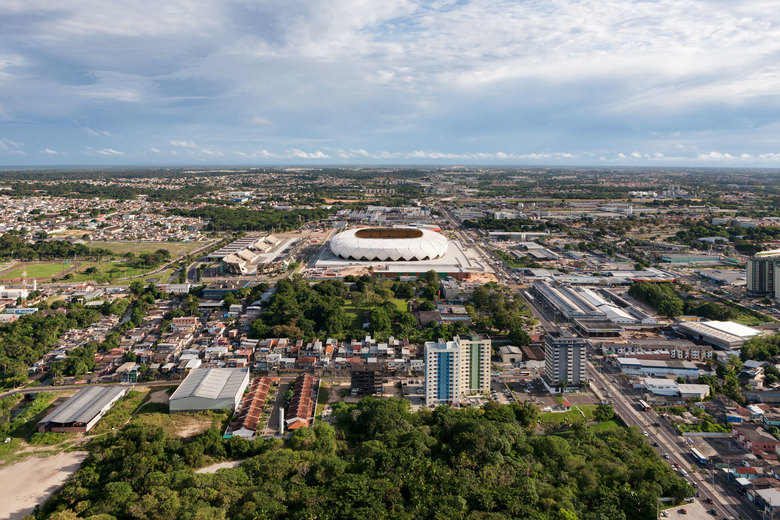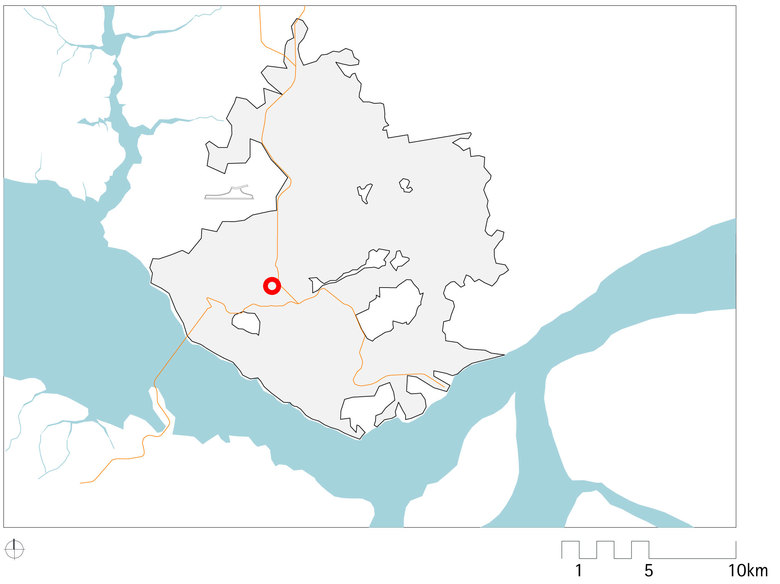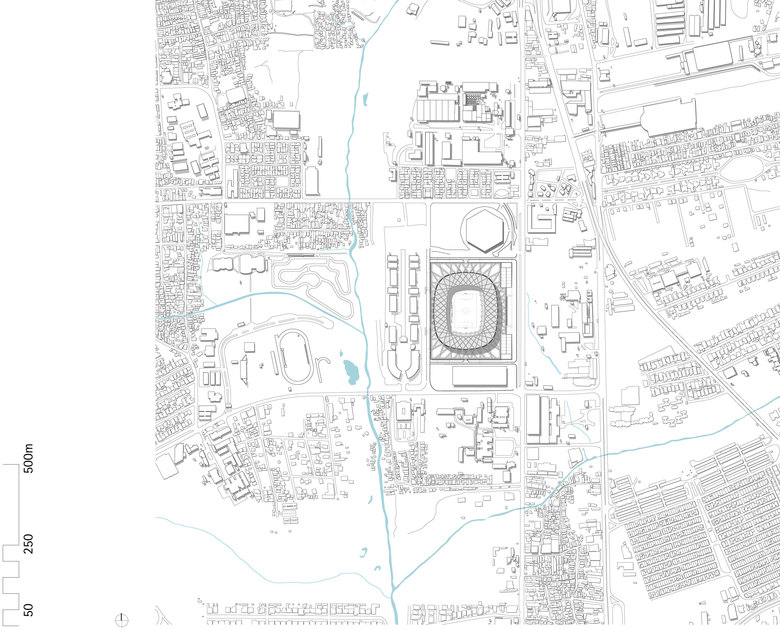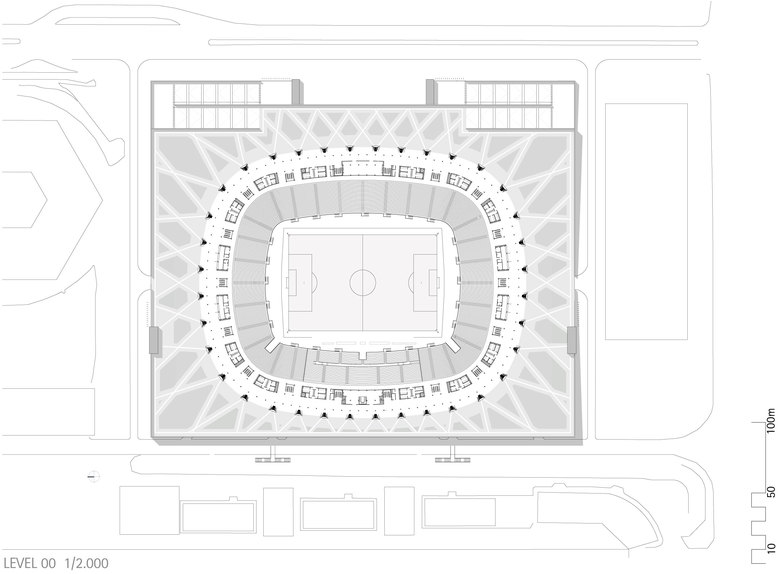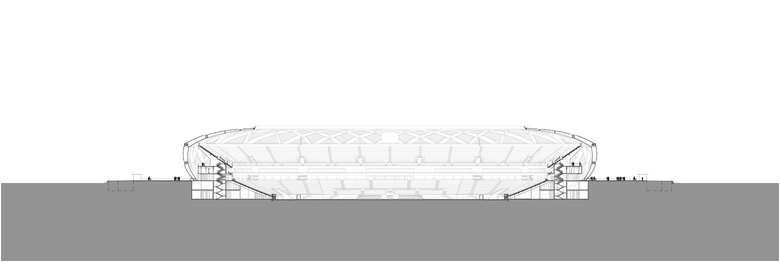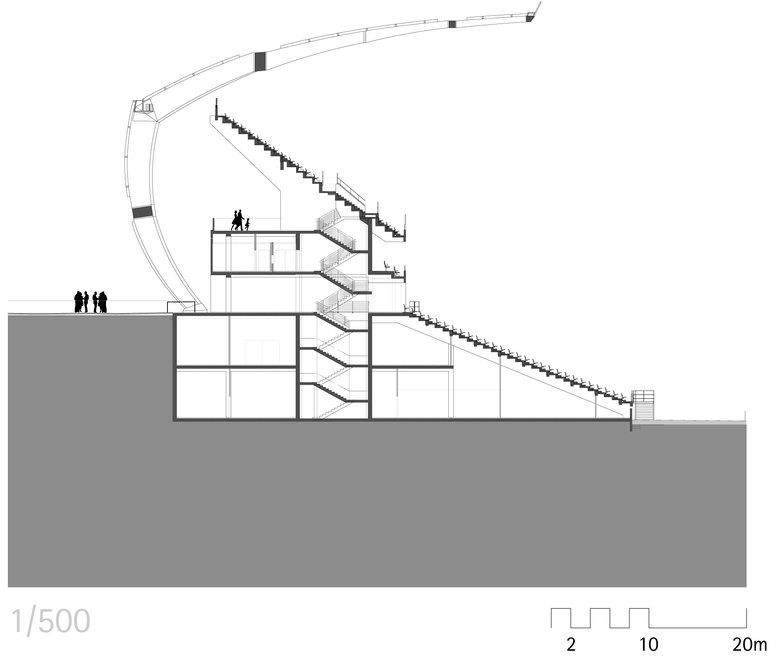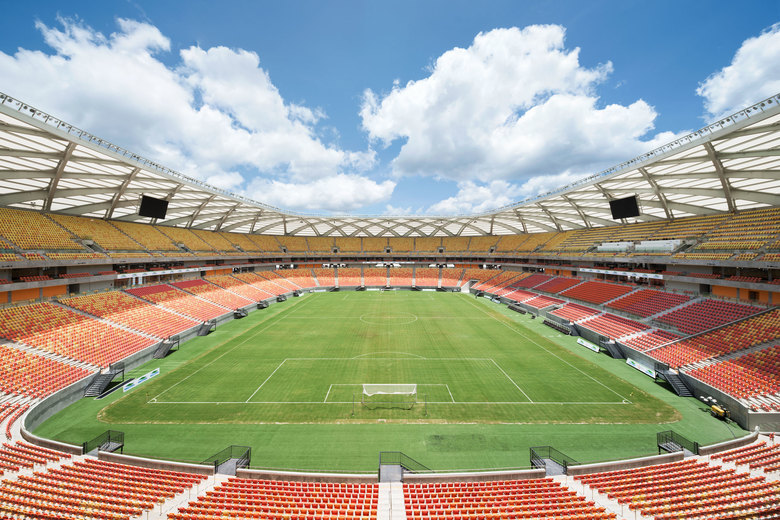Arena da Amazônia
Located in the middle of the jungle, 1500 km from the sea, Manaus is where the Rio Negro and Rio Solimões run together to form the Amazon, the world’s mightiest river. It is also the capital of the similarly named federal province, a metropolis that was once a centre of the rubber industry but is now, as a Free Economic Zone, a finance center with global trade relationships. It also has a fascinating cultural legacy, which, with the potential of the surrounding rain forests, makes it a very attractive tourist center.
With the design of the new Manaus stadium, the aim was to come up with a very simple but highly efficient stadium that would at the same time specifically symbolize the location, particularly the fascination and natural diversity of the tropical rain forest.
With a capacity of 45,000, the stadium lies directly on the central traffic axis linking the city with the airport. Integrated into a sports park that is also home to a sambodrome, athletics facilities, multi-purpose venues and a swimming center, it is part of the “Arena da Amazônia”, which offers ideal conditions for professional and local sporting events. The basic design was developed in cooperation with our local partner
STADIA, São Paulo and with the structural engineers schlaich bergermann & partner, Stuttgart.
Exploiting the natural topography, the stadium is situated on a plinth set into a slight slope that also houses commercial facilities and parking. An encircling ring of boxes, offices and a restaurant for fans separates the upper tier from the lower tier, which is cut into the plinth.
The roof structure is made up of mutually supporting cantilevers, whose steel hollow core girders function simultaneously as large gutters to drain the immense run-off of tropical rainwater. Given the hot, humid Amazonas climate, the roof continues into the façade to provide shade and shelter for spectator circulation areas and vertical access points. The fields of the roof and façades consist of translucent fiberglass fabric. The natural ventilation arising in combination with the façade apertures creates a pleasant microclimate.
Under the banner of a sustainable World Cup, the stadium will be one of the first to be certified as compliant with the LEED (leadership in energy and environmental design) criteria of the US Green Building Councils. The integrated ecological scheme takes account of the choice of location, construction sequence, transport routing and primary energy content of individual materials, water resource management, energy consumption, regulation and control systems, waste management and a permanent monitoring of ongoing operations.
As one of the most important centers of ecotourism in South America, Manaus will acquire a characteristic landmark that will do justice even in the long term to the requirement for a responsible treatment of natural resources.
Concept and scheme design: gmp and schlaich bergermann and partners with stadia, São Paulo
Detailed design gmp and schlaich bergermann and partners
Design: Volkwin Marg and Hubert Nienhoff with Martin Glass, 2008
Project Management: Martin Glass, Maike Carlsen
Project Management, Brazil: Burkhard Pick, Sander-Christiaan Troost
Director of gmp do Brazil: Ralf Amann
Team members (alphabetical): Sophie-Charlotte Altrock, Felipe Bellani, Lena Brögger, Claudia Chiappini, Lieselotte Decker, Barbara Düring, Stefanie Eichelmann, Konstanze Erbe, Silke Flaßnöcker, Priscila Lima da Silva Giersdorf, Elke Glass, Ruthie Gould, Jacqueline Gregorius, Claudio Aceituno Husch, Fabian Kirchner, Juliana Kleba Rizental, Jochen Köhn, Martin Krebes, Helge Lezius, Veit Lieneweg, Ausias Lobatón Ortega, Guilherme Maia, Rodrigo Mathias Duro Teixeira, Lucía Martínez Rodríguez, Adel Motamedi, Dirk Müller, Dirk Peissl, Ivanka Perkovic, Camila Prevé, Nicolai Reich, Stefan Saß, Florian Schwarthoff, Fariborz Rahimi, Sara Taberner Bonastre, Sónia Taborda, Angélica Larocca Troost, Katerine Witte
In cooperation with
schlaich bergermann and partners, Stuttgart; stadia, São Paulo
Engineers
Structural design: schlaich bergermann and partners – Knut Göppert with Knut Stockhusen and Miriam Sayeg
Team members (alphabetical): Tiago Carvalho, Uli Dillmann, Andreas Eisele, Florian Geiger, Alberto Goosen, Sebastian Grotz, Jochen Gugeler, Achim Holl, Roman Kemmler, Hubert Kunz, Sandra Küstner, Walter Paganucci, Jana Pavlovic, Bernd Ruhnke, Guilherme Sayeg, Tilman Schober, Alexander Stäblein, Alfred Strasdeit, Kai Zweigart
Structural design of solid structure in cooperation with EGT, São Paulo; Larenge, São Paulo, Ruy Bentes, São Paulo
Services engineering: b.i.g. Bechtold Ingenieurgesellschaft mbH and MHA, São Paulo (design phase), Teknika Projetos e Consultoria Ltda, São Paulo; Soeng Construção hidroelétrica Ltda, São Paulo; Bosco & Associados Ltda, São Paulo; Loudness Sonorização Ltda, São Paulo
Landscape design: ST raum a. (design phase); Interact, São Paulo
Seats
approx. 44,400
Length of stadium
approx. 240 m
Width of stadium
approx. 200 m
Construction period
2010-2014
Certification
LEED Certified
- Year
- 2014
